
Welcome to CANADA HiFi’s first LCD television shootout! To make the shootout possible, we asked five manufacturers to send us their latest mid-sized LCD TVs. Sharp, Samsung, Panasonic and Luxor supplied us with 26-inch models and ViewSonic sent us a 32-inch model. All of the 26-inch TVs were priced between $1199 and $1699 and the ViewSonic, even though it offered a larger screen size, was only $100 more than higher-priced units in the shootout. The evaluations were performed by the editors of CANADA HiFi: Suave Kajko, Octavio Umana and Shamus Coghlan.
The vast majority of television manufacturers ship their TVs calibrated for optimal showroom performance. This means that the contrast and brightness are turned way up and the colours are oversaturated. This is done to capture a shopper’s attention in bright showrooms with competing TVs side by side. These settings are not appropriate for optimal home viewing but many people maintain this default when viewing the TV at home. So, the first part of our video tests were done with the TVs in their out-of-the-box video mode. Next, all the TVs were switched to the Standard video mode. These results will be particularly important to those of you who won’t be using a video calibration disc to make any adjustments. For the second part of our tests, we used a Digital Video Essentials (DVE) disc to make some basic adjustments including brightness, contrast, colour/tint and sharpness for each TV. Video enthusiasts use these calibration discs to find a good balance between the brightness and contrast and to adjust the colours to be as accurate as possible.
Each part of the tests was performed using one of four television signals: a 480p digital cable signal, an interlaced 480i and a progressive-scan 480p DVD signal, a 720p high-definition signal from a Starchoice satellite box and a 720p signal from an Xbox 360.
In order to deliver a single video signal to five TVs at the same time, our friends from www.AVDeals.com provided us with a CE Labs AV901HD component video distribution box. This allowed us to perform all of our video tests side-by-side. We used (analog) component video connections, as opposed to (digital) DVI or HDMI, because the television sets perform scaling and analog-to-digital conversion on analog input signals. TVs do not process DVI and HDMI signals and therefore cannot mess them up.
The majority of new progressive-scan TVs have a deinterlacer (often called a “line doubler”) built-in, which automatically converts any 480i input signal to 480p or better before it is displayed on the screen. Interlaced signals can come from composite, S-video and component connections. Most DVDs in fact, are encoded as interlaced. However, it is recommended that deinterlacing be left to a decent progressive-scan DVD player. A DVD player, from about $150 and up, likely has a better deinterlacer than your TV. The DVD player’s deinterlacing is performed in the digital domain, rather than sending an analog video signal to the TV, which has to convert it back to digital for deinterlacing. This gives the DVD player another advantage. So if you will be connecting a good progressive-scan DVD player to your new TV, the quality of the deinterlacer built into the TV may not matter to you. Keep in mind of course, that in order to take advantage of the deinterlacer built into your DVD player, you must use its component video, DVI or HDMI outputs.
And now, on to the tests.

Panasonic TC-26LX50, $1599.99 (MSRP)
The Panasonic TC-26LX50 featured a simple but attractive design. Its straight forward rectangular shape finished in silver with a matte black frame focused the viewer’s attention on the screen better than the glossy or lighter colour frames of other TVs. Speakers were located at the bottom of the screen behind a silver grille.
A wealth of video inputs were found onboard: 3 composite, 3 S-video, 2 component and one HDMI. There was also a single composite video output. The lack of a VGA input means that this Panasonic can’t double as a computer monitor.
The Panasonic television produced a very good picture out of the box. The picture presented great detail and good colour saturation. The black level was deep although came at a slight sacrifice of contrast and detail in dark picture areas. As a result, the picture appeared a little on the dark side. Some digital enhancements were noticeable on this television with factory settings. When switched to Standard video mode, the depth and smoothness improved and picture enhancements became less visible. Although, we felt the need to increase the brightness in this mode. Switching between different picture modes required accessing the TVs onscreen menu. It would be more convenient to have a button on the remote to change between modes. The onscreen menu itself had an outdated and poor design although it offers access to all the necessary picture and audio adjustments.
To test deinterlacing and cadence (frame rate) pick-up of the Panasonic (and all other TVs in this shootout), our Pioneer DVD player was switched to output the interlaced signal from its component outputs. A flyover scene at the end of chapter 12 of the Gladiator DVD is a particularly difficult scene for televisions to handle. The Panasonic showed jagged rooftop edges and moiré artifacts as if it did not pickup the frame rate change. Even though these types of scenes challenged the Panasonic’s video processor, it did a great job at deinterlacing material that didn’t require it to switch between film and video cadences.
After we adjusted the picture controls using the Digital Video Essentials disc, the Panasonic delivered a much better balanced, 3-dimensional picture. The colours became more realistic and the picture gained more depth.
And how about high-definition signals? The Panasonic did a great job of scaling the 720p signal to its native resolution. The picture was sharp, without many visible edge enhancements, and came through with extreme detail. The depth of this picture could only be matched by the Sharp in this shootout.
The remote control is a smaller version of one that came with our three year old Panasonic plasma television and unfortunately it is not backlit. It’s a universal remote capable of controlling a DVD player, a digital receiver and a VCR. Like many remotes, it lacks direct video input buttons, which allow the user to switch between different sources with a single button press. The buttons of this remote are a little small, making it not as comfortable to use as the other remotes.
All three of us were impressed with the TC-26LX50’s overall performance. The picture looked great from the factory although it was a little dark. But that was easily fixed by turning up the brightness slightly. After some basic picture adjustments, the TC-26LX50 delivered one of the best pictures in this shootout. With its $1599 price tag, the Panasonic was a great performer at an attractive price point.

Sharp Aquos LC-26D4U, $1699.95 (MSRP)
The Sharp Aquos LC-26D4U 26″ LCD TV was perhaps the most elegant TV in our shootout. Its glossy piano finish kept the TV looking good even when it was off, which the style conscious buyer would appreciate. The speakers are located on either side of the screen and bubble out towards the viewer. The black frame did a good job of containing the picture and increasing the perceived brightness and contrast. However it did reflect ambient room light because of its glossy finish attracting some attention to itself as well.
This television’s suite of video inputs contained: 3 composite, 1 S-video, 2 component and 1 HDMI. There is no VGA input. A single composite/S-video output is also provided.
The Sharp LCD television had great detail, very deep black level, good contrast and only slight digital enhancements when we pulled it out of the box. In fact, our first impression was that this television produced the darkest blacks and best colours of all the television sets in this shootout. Another area in which the Sharp excelled was its fluid motion. Scenes in which the camera panned across the screen were much smoother than on the other televisions. After watching the picture for a few minutes though, it became apparent that the Sharp had a bias towards red and that the deep blacks were achieved at a sacrifice of contrast. This red tint was apparent in all the picture modes. This was particularly noticeable on people’s skin which appeared redder than in real life. Out of the box, the picture was stretched vertically but it was easily corrected by pressing the ‘View Mode’ button.
The flyover scene in Gladiator showed very jagged rooftops and stair cases. The moiré artifact was also visible in some of the rooftops. Both of these findings indicated that a good quality progressive scan DVD player should be used with this television. Other than this difficult scene to process, the Sharp did a good job at deinterlacing everything else that we watched on it.
Using the DVE disc to calibrate the basic picture settings, the LC-26D4U lost some of its bias towards the reds producing a much better colour balance. Although the redness of the picture didn’t go away all together. The onscreen menu is well laid out and provided quick access to all settings.
The 720p high-definition signals looked stunning on the Sharp. The details and sharpness were second to none, producing a picture that displayed realistic depth and three dimensional images. This TV definitely had an edge when it came to high-definition. Its 768 by 1366 resolution meant that the entire 720p (720 by 1280 pixel) signal was displayed on the screen.
The Sharp was the only television in our shootout that came with a fully backlit universal remote control. The backlight by itself made it the best remote of the bunch. Although we all found the remote to be unnecessarily large, it fit in our hands quite comfortably. Most of its buttons are logically grouped and comfortable to press. However, there are five buttons which are hidden behind a flap at the bottom of the remote that are a hassle to access. Opening the flap brings the length of the remote to a staggering 12 inches! Definitely an odd design but the backlight easily makes up for it.
The Sharp Aquos LC-26D4U produced an excellent picture quality with factory settings, although it was a bit too dark. Adjusting the brightness and turning down the reds brought it to a level that made it a top-notch performer in our shootout.

ViewSonic N3260w, $1799.00 (MSRP)
As mentioned earlier, the ViewSonic was the only 32-inch television in this shootout. But with its $1799 price tag, it fit right in with the rest of the television sets. Towering over the other TVs like a big brother, the extra 6-inches of screen size made this TV substantially larger than its competitors. The design and single-colour gunmetal finish of the ViewSonic were simple, yet sleek and effective. Since the speakers were positioned along the bottom of the screen, this TV was about the same width as the 26-inch Sharp and Luxor that had side mounted speakers.
The N3260w contained a good number of video inputs including: 2 composite, 2 S-video, 2 component, a single VGA and a single HDMI. Two RF connectors on the back allowed for antennae and cable TV signals. A single RCA analog audio output was also provided.
When the ViewSonic was powered on for the first time, it had an integrated and natural looking picture: the details were great and the contrast was impressive. After a closer inspection, this TV had a bit of a bias towards the reds and it couldn’t exactly match the black levels of the Sharp and Panasonic in this comparison. Its lighting fast response time of 8 milliseconds, produced blur-free motion and incredibly smooth panning. In the Standard picture mode, the ViewSonic produced the most accurate colours and smooth images mostly free of artifacts.
Both the waving flag from the DVE disc and the flyover in Gladiator produced jagged edges indicating that a good progressive-scan DVD player should be used with this TV, as with most of the TVs in this shootout. Moiré artifacts were not noticed on this set.
After using the DVE disc to make the basic picture adjustments, the picture became even more integrated than at the start and looked a little less washed out. Although the changes were not drastic since the picture was impressive from the beginning. This television had the most attractive and well laid out onscreen menu system that was large and easy to read from a distance. When making any video adjustments, the menu automatically minimized to show clearly how the adjustment was affecting the picture, something that every TV’s menu should do.
During some dark scenes, we did notice that the ViewSonic had a bit of a hotspot, an area that was more lit up than the rest of the picture, on the right hand-side of the screen. It wasn’t a big issue and was only noticeable during really dark scenes.
High-definition signals were processed very nicely by the ViewSonic. The TV’s 768 by 1366 resolution meant that all the information from the 720p signal (720 by 1280 pixels) was displayed on the screen and only slight up-conversion had to be performed. The picture was detailed and three dimensional, although a little softer than some of the other sets in this test.
The supplied universal remote control was capable of controlling other devicesand fit comfortably in the hand because it was just the right size. Semi-direct input buttons (one button for toggling between composite/S-video inputs, one for component and one for HDMI/PC) definitely gave this remote an edge over most of the other remotes.
There is no question that the ViewSonic presented an impressive picture quality and an incredible value because of its larger screen size yet similar price point. We made some minimal adjustments to tweak the picture although this television would be more than suitable for someone who won’t be touching the picture controls.

Luxor LT-26D1P1 $1199.99 (approximate street price)
The Luxor LT-26D1P1 featured a clean and attractive design finished in a combination of silver and black. It sported a design that looked a little busier compared to the rest of the sets. The side-mounted speakers gave the impression that they might be detachable although they were not. A matte black frame did a good job of focusing the viewer’s attention on the screen. It had the most noticeably glossy screen finish in this shootout.
Its complement of video inputs consisted of 3 composite, 1 S-video and 2 component jacks. One of the two component inputs accepts 480i signals only and it is not clearly labeled on the back of the TV. The second component input accepts 480i/p, 720p and 1080i. Computer signals are accepted via a VGA or a DVI (without DHCP) input. A single composite video output is also present. A unique subwoofer output jack can be found on this television as well. This will allow you to get a deeper bass without having to connect this TV to a receiver, which is a nice touch.
The LT-26D1P1 is an affordable, entry-level television that aims to please consumers with a limited budget. So how did it do?
Out of the box, the Luxor displayed a very dark, unbalanced picture that was completely out of line with the other TVs. After a quick look at the onscreen menu though, I found a ‘Black Level’ adjustment and turned it right down. This instantly put the Luxor on a level playing field with the other sets. Now, the colours, black level and contrast looked balanced delivering an enjoyable picture. Like other TVs in this shootout, the reds appeared ever so slightly too red. Right off the bat, we noticed that this television produced very smooth motion and did a great job with panning scenes. The lack of detail and resolution produced a rather soft picture. The glossy screen probably had something to do with this as well. All three of us were satisfied with the Luxor’s performance from the factory (after the black level was turned down).
After watching the picture for a few minutes, we noticed that the Luxor, like the ViewSonic, also had a hotspot on its screen. In fact, there were two hotspots in both lower corners of the screen. Again this was noticeable mostly during very dark scenes. After turning the black level down, dark scenes and deep blacks appeared with a tint of indigo.
The Luxor did perhaps the best job out of all the TVs at deinterlacing the flyover scene in Gladiator. Some jagged edges were present but not nearly as noticeable as with the other sets. The moiré artifact was also present but not as often. This TV also appeared to flicker (judder) the least when displaying this scene. It performed equally as well with the flag test from the DVE disc. This indicated that any inexpensive DVD player will work just fine with this TV because it can do a great job at deinterlacing.
The basic picture adjustments from the DVE disc did wonders for the Luxor. The picture became much more natural and the brightness, dark levels and contrast were now balanced very well.
High-definition signals are perhaps the only area in which the Luxor could clearly not match the more expensive sets. The 720p signals looked overly soft and lacked detail. This initially led me to believe that perhaps this TV did not have as high of a resolution as the other sets, but it did. It had the same 768 by 1280 resolution as some of the other TVs in this shootout.
The remote control is a little wider than most remotes but it sat comfortably in the hand. Its design looked slight cheap compared to the other remotes. Logically separated and colour coded buttons make it easy to control the TV. Like most other remotes in this shootout, it didn’t offer a backlight or direct video input buttons.
All in all, the Luxor did a good job with standard television and DVD materials. With a street price of about $1199, it presents an affordable option for first-time buyers or those with a smaller budget looking for a flat-panel television.

Samsung LN-R268W $1699.99 (approximate street price)
You could say that the designers were thinking outside the box when designing the Samsung LN-R268W LCD TV. Instead of using the typical rectangular shape, the bottom of the screen frame was triangular. A speaker grille positioned at the bottom followed the same triangular lines. Its unique shape was sexy, stylish and had a designer look to it. At the bottom of the glossy frame sat a large, round power button that further added to the Samsung’s unique design.
Video inputs on this television included: 2 composite, 1 S-video, 2 component, 1 HDMI and 1 VGA for connecting a computer signal. No video outputs were provided.
Watching the Samsung straight out of the box, the picture was sharp with a lot of detail. This television had the sharpness and brightness turned all the way up from the factory. As a result, the picture had noticeable digital artifacts and jagged edges which made for a rather artificially looking picture. The colours were a little too saturated and as with most TVs in this shootout the reds were a little too red. Although motion was very smooth with most material that we watched on this TV, during some panning scenes, the motion did get slightly choppy. The backlight of the screen was uniform without any noticeable hotspots. The Standard picture mode produced similar results.
The Samsung did a good job at deinterlacing the Gladiator flyover scene. We noticed only slight jaggedness in the rooftops and the moiré artifacts were absent. The progressive-scan picture produced by our Pioneer DVD player looked much better on the Samsung, indicating that like with most TVs, this one should be paired up with a good DVD player.
After making basic picture adjustments using the DVE disc, the Samsung’s picture improved substantially. With the sharpness turned down, the picture lost much of its digital look. It now became a smoother picture with a good amount of detail and without the initial jaggedness and artifacts. Turning the brightness down resulted in more natural looking images with deeper levels of black and a good variation of contrast. Slight colour adjustments produced better balanced colours that were less saturated compared to the out of the box settings.
High-definition programming was handled very well by the Samsung on its 1366 by 768 resolution screen. The picture was sharp and had great detail. It also had better depth than the 480p signal.
The average-sized remote control was comfortable to hold with buttons that were logically laid out. It was not a universal remote, so other devices cannot be controlled with it. It did not have a backlight or direct input buttons.
All together, the Samsung produced an enjoyable picture with factory settings. However, if you want to use this television to its full potential some basic picture adjustments should be made. Overall, this television can bring a flat-panel designer-style TV to your home with a good picture quality at a reasonable price point of about $1699.
Shootout Final Thoughts
It’s pretty clear, that the performance of LCD televisions is progressively improving. Every television in this shootout was capable of producing noticeably smoother motion, better colours, deeper black levels and increased contrast ratios compared to previous generations of LCD televisions. With a large number of LCD TV manufacturers to choose from, today’s televisions are priced very competitively and a wide selection is available for every budget.
Even though all LCD TVs have deinterlacers built-in (most with 3:2 pulldown detection), we recommend using a decent progressive-scan DVD player to handle the decinterlacing. In the majority of the cases, the DVD player will produce a much better picture quality.
Make sure to read our LCT Television Buyer’s Guide also in this issue.
16 Comments
Leave A Comment
You must be logged in to post a comment.

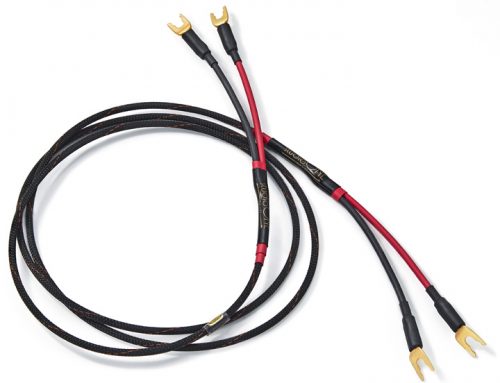
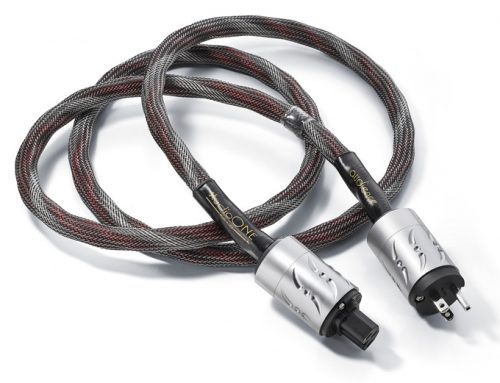
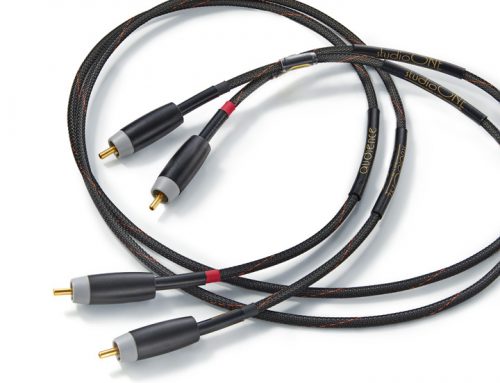
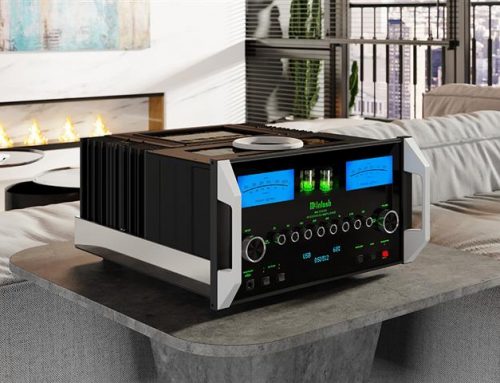
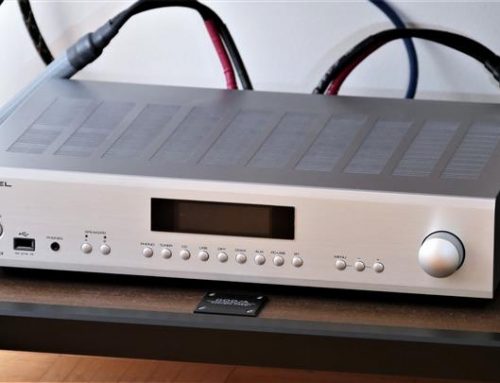
… [Trackback]
[…] Read More here on that Topic: novo.press/lcd-tv-group-test-26-to-32-models-from-panasonic-sharp-viewsonic-samsung-and-luxor/ […]
… [Trackback]
[…] Read More on that Topic: novo.press/lcd-tv-group-test-26-to-32-models-from-panasonic-sharp-viewsonic-samsung-and-luxor/ […]
… [Trackback]
[…] Here you can find 40165 additional Information on that Topic: novo.press/lcd-tv-group-test-26-to-32-models-from-panasonic-sharp-viewsonic-samsung-and-luxor/ […]
… [Trackback]
[…] Read More Information here on that Topic: novo.press/lcd-tv-group-test-26-to-32-models-from-panasonic-sharp-viewsonic-samsung-and-luxor/ […]
… [Trackback]
[…] Find More to that Topic: novo.press/lcd-tv-group-test-26-to-32-models-from-panasonic-sharp-viewsonic-samsung-and-luxor/ […]
… [Trackback]
[…] Read More Info here on that Topic: novo.press/lcd-tv-group-test-26-to-32-models-from-panasonic-sharp-viewsonic-samsung-and-luxor/ […]
… [Trackback]
[…] Find More here on that Topic: novo.press/lcd-tv-group-test-26-to-32-models-from-panasonic-sharp-viewsonic-samsung-and-luxor/ […]
… [Trackback]
[…] Read More on on that Topic: novo.press/lcd-tv-group-test-26-to-32-models-from-panasonic-sharp-viewsonic-samsung-and-luxor/ […]
… [Trackback]
[…] Info on that Topic: novo.press/lcd-tv-group-test-26-to-32-models-from-panasonic-sharp-viewsonic-samsung-and-luxor/ […]
… [Trackback]
[…] Read More here on that Topic: novo.press/lcd-tv-group-test-26-to-32-models-from-panasonic-sharp-viewsonic-samsung-and-luxor/ […]
… [Trackback]
[…] Information to that Topic: novo.press/lcd-tv-group-test-26-to-32-models-from-panasonic-sharp-viewsonic-samsung-and-luxor/ […]
… [Trackback]
[…] Find More on on that Topic: novo.press/lcd-tv-group-test-26-to-32-models-from-panasonic-sharp-viewsonic-samsung-and-luxor/ […]
… [Trackback]
[…] Info to that Topic: novo.press/lcd-tv-group-test-26-to-32-models-from-panasonic-sharp-viewsonic-samsung-and-luxor/ […]
… [Trackback]
[…] Read More to that Topic: novo.press/lcd-tv-group-test-26-to-32-models-from-panasonic-sharp-viewsonic-samsung-and-luxor/ […]
… [Trackback]
[…] Find More on that Topic: novo.press/lcd-tv-group-test-26-to-32-models-from-panasonic-sharp-viewsonic-samsung-and-luxor/ […]
… [Trackback]
[…] Information to that Topic: novo.press/lcd-tv-group-test-26-to-32-models-from-panasonic-sharp-viewsonic-samsung-and-luxor/ […]